What to do in Peloponnese and Mainland Greece
A heaven for road-trip lovers. From summer to winter, there are classic and modern treasures to be discovered all around Peloponnese and Mainland Greece.
Everything you need to know before traveling to Peloponnese and Mainland Greece
Table of Contents
What to do in Peloponnese and Mainland Greece
- Explore the coastal traditional Greek villages and towns
- Embark on a scenic road trip in Greece
- Visit an actual medieval town in Peloponnese
- Discover the splendor of ancient Greece
- Taste the olive oil from the Greek olive trees, the essence of the Mediterranean diet
- Visit the best Greek wineries and try wine
- Swim in the sea, under waterfalls, and in alpine lakes
- Enjoy activities in Peloponnese, Mainland Greece and explore the stunning Greek nature
- Go to the top of Meteora: 60 million years old rocks
- Traditional Greek foods in Peloponnese and Mainland Greece
- Learn how people in ancient Greece used to conquer stress and anxiety
- Join Traditional festivities with the locals
Practical guide to Peloponnese and Mainland Greece
- How to get around in Peloponnese and Mainland Greece
- Where to stay in Peloponnese and Mainland Greece
- How many days in Peloponnese and Mainland Greece are enough
- What is the best time to visit the Peloponnese and Mainland Greece
Breathtaking landscape, captivating regions, rich history, delicious recipes and spectacular coastline.
Mainland Greece simply has it all!
Greece is a popular holiday destination and in addition to the famous islands, the Mainland is for many the real deal! Numerous archaeological sites, fascinating culture, spectacular coastline and picture-perfect scenery!
Mainland’s extensive coastline boasts stunning beaches and peaceful fishing villages just like the islands. Across the mainland, you’ll also find high mountains ideal for trekking adventures, old fortified towns and fulfilling cities waiting to show you their best secrets. We’ve gathered the best things that the Greek Mainland has to offer to help you plan your itinerary accordingly and ultimately have the time of your life with your family and friends.
1. Explore the coastal traditional Greek villages and towns
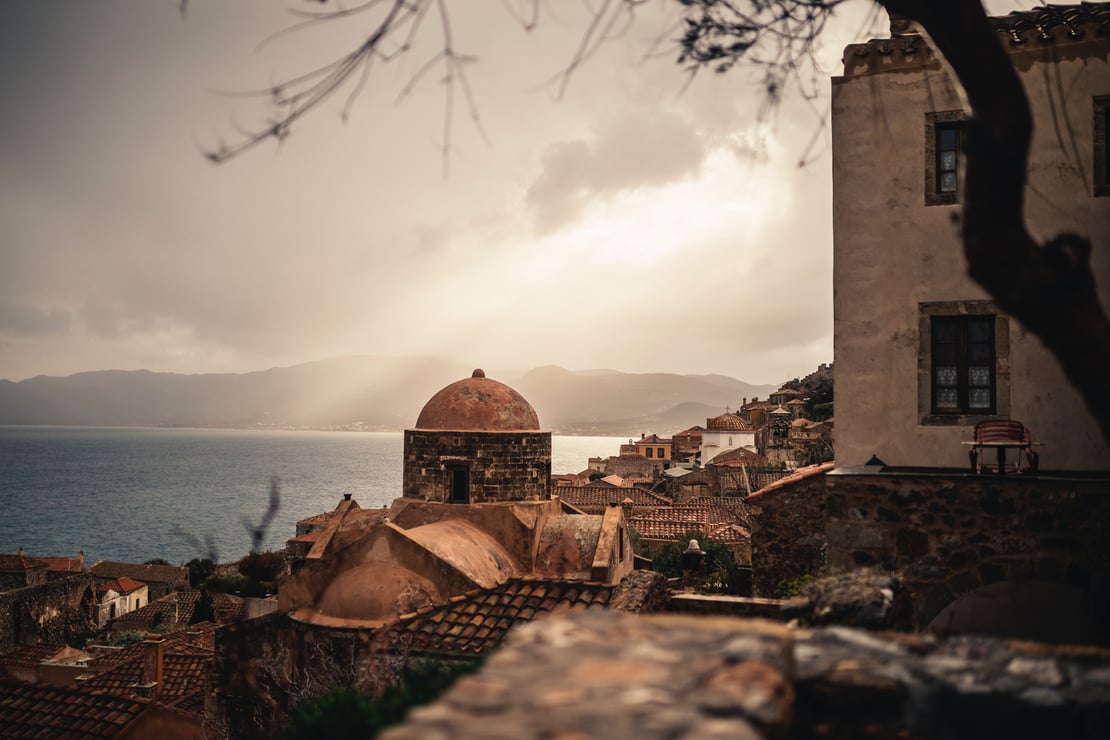
Nafplio
Nafplio is the first capital and one of the most beautiful traditional Greek villages. A masterpiece of Venetian, Ottoman and Greek architecture, it lies underneath the imposing Palamidi castle and features the fort of Bourgi in a small island right in the middle of the harbor. The maze of red and burnt-orange rooftops will take you to a trip across centuries while the refined beauty of the town, that elegance of the past, will turn you into a Nafplio regular once you walk those cobblestone streets.
Nafplio is easily explored on foot. Most of Old Town Nafplio is pedestrianized, and parking can be scarce on the outskirts.
The region of Mani
The region of Mani is in Southern Peloponnese, and it expands in the prefectures of Lakonia and Messinia. It’s full of traditional Greek villages with stone-built tower-houses, rocky landscape abruptly 'diving' into the sea in impressive cliffs with some of the most wild beaches in mainland Greece. Limeni is one of the picturesque fishing traditional Greek villages of Mani with excellent fish taverns and beautiful tower houses. Here you can admire the tower house of the Mavromichalis family, which played a significant role in the Greek War of Independence.
Galaxidi
Located only 3 hours by car from Athens and below ancient Delphi, the traditional Greek village of Galaxidi is a quiet mainland destination with the air of a distant, romantic island. On a short ride from Galaxidi, you can also visit Nafpaktos is the most beautiful traditional Greek village of Western Greece. The idyllic beaches face the Corinthian gulf; the majestic mountain embraces the town of Nafpaktia; the rich history is reflected upon two monuments, the Venetian castle and the Venetian port.
Don’t miss to visit the traditional Greek village of Areopoli (named after the ancient Greek god of war), it has been built on the feet of the mountain Agios Elias and it was declared as a traditional settlement.
2. Embark on a scenic road trip in Greece

Greece has great beaches, but the scenic drives and the beaches in mainland Greece and Peloponnese are beautiful too. Travelers may know the Greek islands best and think of Greece as perfect for a beach vacation, but you can take a great road trip in Greece through its spectacular mainland scenery. Here 3 suggested routes for a road trip in Greece:
Northern Greece
Start your road trip to the North to reach Ioannina. The lakefront city of Ioannina has exquisitely well preserved buildings, oozing Ottoman heritage, splendor and folklore architecture. The city was once the capital of Enlightenment in Greece!
Next stop, Zagori. Once setting foot in the region, one realizes that Zagori is big on stone. There is a certain something about the elegance of Zagorian architecture that it's almost enchanting. Charming old villages will surround you with their earthy colors while the fresh mountain air will go straight to your lungs and give them a kick of life.
Final stop, Thessaloniki. Thessaloniki has always been one of the most beautiful cities and has had one of the most interesting cultural blends! Regaling your senses with the excellent Greek food of Greece's gastronomic capital and exploring its culture, history and vibrant nightlife of Thessaloniki.
When planning your road trip in Greece, don’t pack your schedule too tightly. Greece moves at its own pace, so you shouldn’t plan that everything is going to be as punctual or efficient as you might be used to. Leave some slack in your schedule to account for this.
Central Greece
Head to the beautiful Galaxidi and spend your night there. Perfect for a relaxed stroll enjoying the enlightened Galaxidi and feel the sea breeze. After your delightful breakfast, take your rented car and visit the mountain village of Arachova.
A visit in Arachova, reveals the charming combining of the old with the new and it is considered as the queen of Parnassos. The wild beauty combined with its unaltered traditional character, its cosmopolitan face and the numerous activities the majestic mount Parnassos offers, place it rightfully a top destination in mainland Greece and of course a chance to collect unforgettable memories!
At the final part of your road trip, seek out the oracle on an ancient trail from the slopes of Mount Parnassus to the village of Delphi, once home to priestesses of Apollo who Ancient Greeks believed could predict the future.
Peloponnese
Pick-up your rental car and drive towards Peloponnese. Your first stop is the impressive Acropolis of Mycenae, built before 1100 BC, which you might recognize from the references in Homer's Iliad - it was Mycenae's King Agamemnon who led the Greek armies to the war of Troy, on behalf of his brother Menelaos, in order to bring back his beautiful wife Helen.
Next stop, Nafplio, the picturesque Peloponnesian town packed to the brim with architectural beauty and history. Nafplio is the first capital of modern Greece and one of the most beautiful towns. A masterpiece of Venetian, Ottoman and Greek architecture, it lies underneath the imposing Palamidi castle and features the fort of Bourgi in a small island right in the middle of the harbor.
Continue your road trip to the medieval castle of Monemvasia. Stroll the cobblestone streets among the stone built houses, churches and squares. Walk all the way to the lighthouse and discover the canons that used to drive away pirate ships.
Upon your arrival at Monemvasia, the best option is to park next to the bridge and take the municipal mini-bus which runs frequently and takes you to the castle entrance. Then you have to walk about 300m of cobblestone street.
3. Visit an actual medieval town in Peloponnese
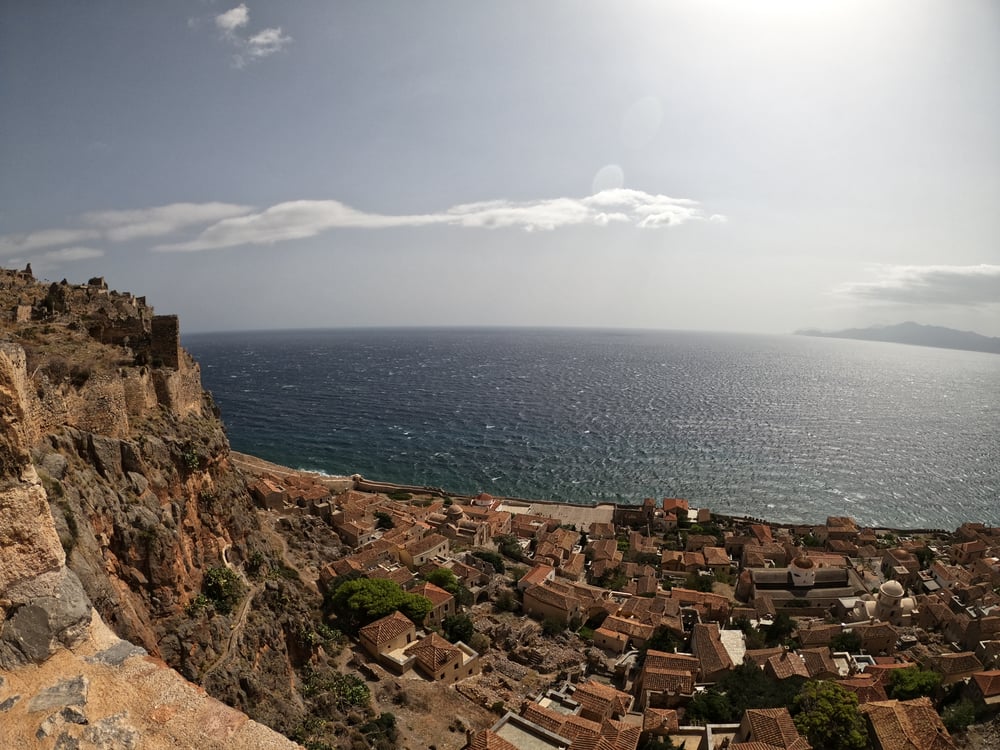
Medieval towns are popular and fascinating as well as historic sites; these places strike a self-confident pose in many a snapshot that captures the ambiance of old times. If you decide to explore them, make sure to have the following suggestions in your list!
Monemvasia
Visiting Monemvasia, the most famous medieval town in Peloponnese, feels like time traveling. Even from the castle's entrance, one wonders what it used to be like when admission could not be taken for granted! Admire this natural fortress literally built in the rock! It is one of the nicest places to visit in Southern Greece. The fortress and the old city are beautiful and rich in history.
On top of the rock you can visit the upper town, with the amazingly preserved and restored church of Ag. Sophia. Agia Sofia Church is a wonderful example of Byzantine architecture and is well worth the steep climb up the stairs. The views are also amazing!
Mystras
Mystras in Peloponnese is an archaeological site close to Sparta, in the region of Laconia. The Castle Town of Mystras was very strong in the Byzantine times and actually in the last decades of the Byzantine period, this was the second most important town after Constantinople. On top of the castle hill, there was the Palace of the Despots, while Mystras Greece is mostly famous for its several Byzantine churches with the interesting architecture and the valuable frescoes.
On the slopes of Mystras, you can enjoy the best of local gastronomy with a nice view of the city of Sparta from above.
Methoni & Koroni
Methoni and Koroni are two majestic seaside castle towns in Peloponnese and ideal destinations for a road trip in Greece. They are intertwined in myriad ways, even though they are about 30 minutes’ drive by car apart from each other. Yet the drive is quite beautiful and leads travelers to think they are twin towns. And although it’s the seaside Venetian castles that steal the spotlight in both towns, their amazing beaches with turquoise waters will win visitors over for good.
4. Discover the splendor of ancient Greece
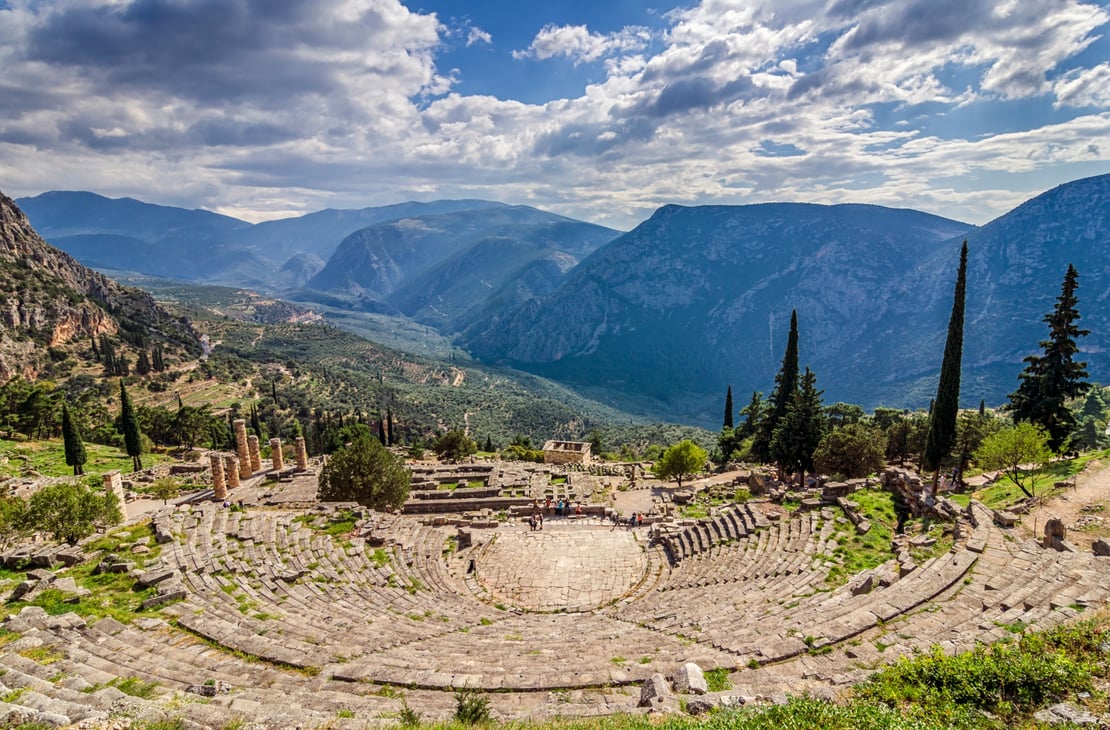
Delphi
Ask the oracle at the center of ancient Greece. Delphi was once home to priestesses of Apollo who Ancient Greeks believed could predict the future. Once believed to be the center of the world and the site at which Apollo spoke through his oracle, Delphi is one of the most important archaeological sites of Greece so it’s no surprise it’s one of the world’s greatest archaeological sites.
Epidaurus
Test the outstanding acoustics of Greek theaters in ancient Greece. The Ancient Theater of Epidaurus is the best preserved among the theaters of ancient Greece. It was aimed to shelter musical and singing contests, as well as drama performances dedicated to Asclepius’ worship. Beside the most famous Ancient Greek theater, it has perfect acoustics. No wonder it is considered the biggest stone resonator in the world. The works of the great tragic poets Aeschylus, Sophocles and Euripides performed in this theater touch the souls of spectators even in our days.
Stand in one of the back rows and listen for the far-off sound of a coin being dropped in the center of the theater!
Olympia
Learn about the Olympic history from the home of Zeus to the modern games . Home to Olympic Games in ancient Greece that took place every four years (the 4-year period was called the Olympiad), Olympia has seen moments of glory and disappointment alike. Walk through the impressive ruins and marvel at the numerous attractions of the site such as the massive temple of Zeus, the museum and the stadium where athletes used to train and compete in ancient Greece.
Go for a run across the stadium where the first Olympic games were performed -by men only!
5. Taste the olive oil from the famous Greek olive trees, the essence of the Mediterranean Diet

The Greek olive trees played great role from antiquity as a symbol of Goddess Athena who according the Greek tradition, she was the one that she planted the first Greek olive tree in Athens. It was used to made wreaths of olive branches during the Olympic games, as offerings to Gods as therapeutic treatment and many other uses. Greeks were the first that they planted and cultivated the olive trees in Mediterranean area. Nowadays Greece is one of the top three countries that they produce olive oil for the worldwide market.
Kalamata
Kalamata olive oil is only found on the Peloponnese peninsula in southern Greece and its a part in the human diet for thousands of years. These Greek olive trees distinguishes by their almond shape and sharp point with a unique purple / black color.
Do you want to learn the secrets and the details in order to know if the olive oil you use in your kitchen is really an extra virgen oil or no and what olive oil match better with what food and why? Contact us and we will find the best tours for you to discover the secrets of the olive oil.
Amfissa
Named after the city in the hills surrounding Delphi, the legendary home of the ancient Greek oracles, Amfissa olives are oval with a fine supple skin. These Greek olive trees have the distinct characteristic of giving table olives that range in color from leafy green to midnight black and every possible hue in between.
Corinthia
Corinthia is a land with long history. The ancient traveler and geographer, Pausanias, mentions the Greek olive trees of Corinthia in his work. Greek olive trees are indissolubly connected to the cultural heritage, the customs and the economic life of the region. The sea breeze, the abundant sunshine, the fertile soil and the special climate of the region create the purposes for the production of quality products.
6. Visit the best Greek wineries and try wine
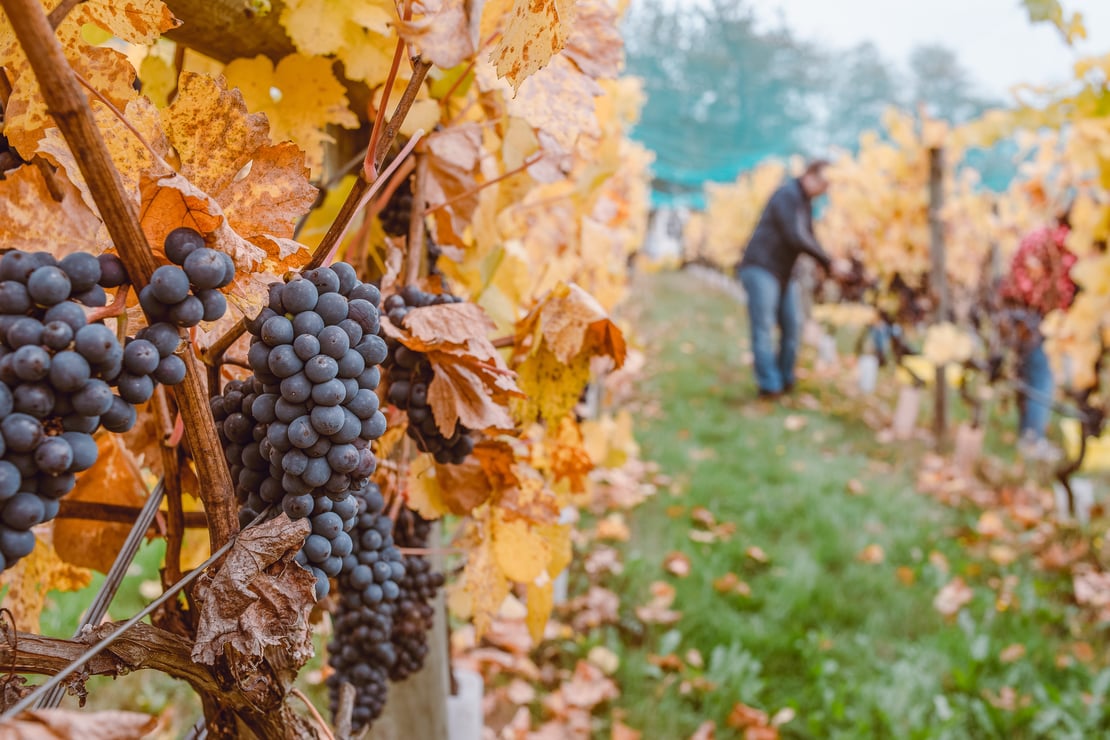
Nemea
Spend your day among the wineries of Nemea, one of the country's most important wine-producing areas. They're especially known for their Agiorgitiko wine, believed to have been first grown from a vine brought by the god Dionysus. These grapes, which are similar to Merlot, are considered to be one of the finest Greek red varietals and have grown in the region for thousands of years—possibly since the 4th century BC. The ancient red wine called Fliasion was also believed to be produced in this area.
After your wine tasting experience, start your adventure to the archaeological site of Nemea where Hercules famously killed the lion. Our team can organize for you a fascinating tour where you'll learn all about the ancient myths surrounding Greece's gods and heroes, all told by a dedicated story-teller and writer!
Naoussa
Naoussa is a destination for nature lovers, surrounded by fields producing peaches, apples, cherries and the red wine variety of “Xinomavro”. Located in Northern Greece, 100 km from Thessaloniki, the town of Naoussa can certainly be the starting point of beautiful trips and explorations of this part of Greece. Naoussa was Greece’s first wine region to be given its own official appellation in 1971 and actually served as a model for the Greek appellation system. The wine of Naoussa is a structured, savory red made exclusively from Macedonia’s flagship red-wine grape Xynomavro.
Monemvasia
There is a really good reason to visit Monemvasia and this is of course to taste the famous Malvasia wine in the surroundings where it originated. Malvasia is an ancient family of grapes that includes a diverse collection of noble varieties. These grapes are capable of producing wine of any feasible color in dry, sparkling and sweet styles.
Choose your favorite bottle of wine and take it as a gift for your loved ones back home.
7. Swim in the sea, under waterfalls, and in alpine lakes
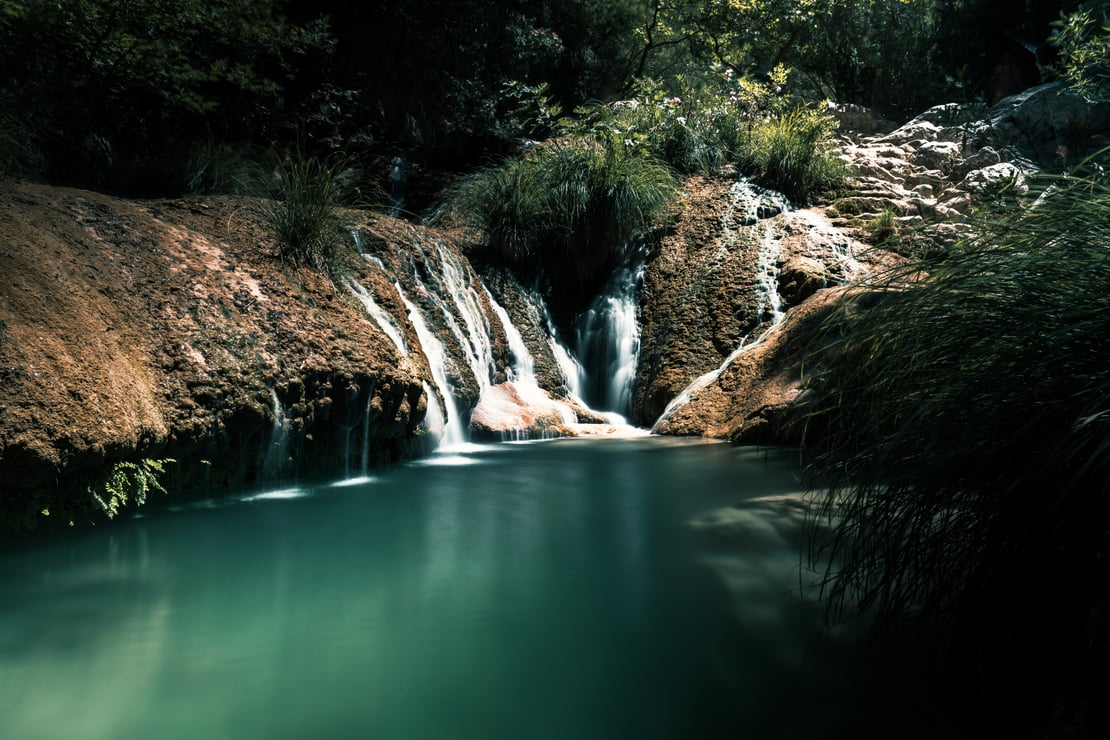
Lakes for swimming in mainland Greece and Peloponnese
Vouliagmeni Lake, in the heart of the Athenian Riviera, is the hidden treasure of Attica’s nature. The lake’s brackish waters which are continuously replenished both by the sea and the underground thermal springs offer a natural and unique thermal spa experience.
Plastiras lake is an artificial lake very close to the town of Karditsa and nearby Meteora. The landscapes being formed at this altitude offer amazing pictures. Don’t miss to combine you’re your tour at Plastiras lake with a lunch at the traditional mountain villages of the surrounding area.
In 2 hours from Athens, travelers can reach Lake Doxa, another artificial lake located at Feneo, Korinthias, at 1.100 m above sea level. In the middle of the lake you’ll see the church of Agios Fanourios.
Plastiras and Doxa lakes are both famous for the many activities they offer; canoe kayak, horse riding, trekking, mountain climbing and many more are offered in the area!
Beaches in mainland Greece and Peloponnese
Swim at a white pebbled beach, with exotic crystal water of unique beauty at Voidokilia beach. The sheltered bay is referred to in Homer's Odyssey and archaeologists believe it was used by King Nestor as a port in ancient times.
Pelion in Thessaly also has excellent sandy beaches. Among our personal favorite are Horefto, Agios Ioannis and Milopotamos.
Swim under a waterfall in mainland Greece and Peloponnese
After some easy river-trekking {upstream} you may reach a waterfall in the northern part of Peloponnese at Mt. Helmos. This water comes from the springs of Styx, famous for the myth about the Achilles hill
Enipeas Gorge is another popular gateway for ascents to the summits and mountain huts of Mount Olympus. But it is a stunning place on its own as well and well worth your visit.
Do it all in one day! Peloponnese has it all. You can take on an exploration that includes walking in amazing sceneries and swimming in three types of water!
8. Enjoy activities in Mainland Greece and explore the stunning Greek nature

Hiking
Conquer the home of the gods while hiking through divine nature at Mt Olympus. Mt Olympus was believed to be the habitat of the 12 Gods. It is not only the tallest mountain in Greece, but also one of the steepest to climb. In fact, hiking Mt Olympus is mostly done during the summer, otherwise weather conditions can be extreme.
Cycling
Nafplio is ideal location in Peloponnese for those seeking some adventure in perfect sync with the stunning vista of the Argolic gulf. It's always better when seen on those two wheels! Enjoy a cycling route that will definitely be worthy of all the effort. Experience some of the city's highlights like Acronafplia on two wheels with this amazing coastal cycling. You can see in a short distance the scenery to change over and over again. You start your cycling tour from the town, you continue though fields and hills and in a few minutes you cycle across the beach.
Enjoy a day of sailing from Nafplio to the nearby islands. While cruising you will get to know basic sail control and upon arrival the boat will anchor at the bay and you will have plenty of time to enjoy a fun day onboard with all the facilities included.
Horse Riding
In the Greek mainland as well as the Greek islands there are horse riding centers scattered across the countryside offering horse riding tours and riding courses. In Greek mythology this relationship between man and horse has a divine dimension; Mount Pelion was the home of the mythical creatures Centaurs, half-men, and half-horses. Here, ancient Greek heroes like Theseus, Achilles and Jason came to master the arts taught by the Centaurs.
9. Go to the top of Meteora: 60 million years old rocks that were formed 60 million years ago
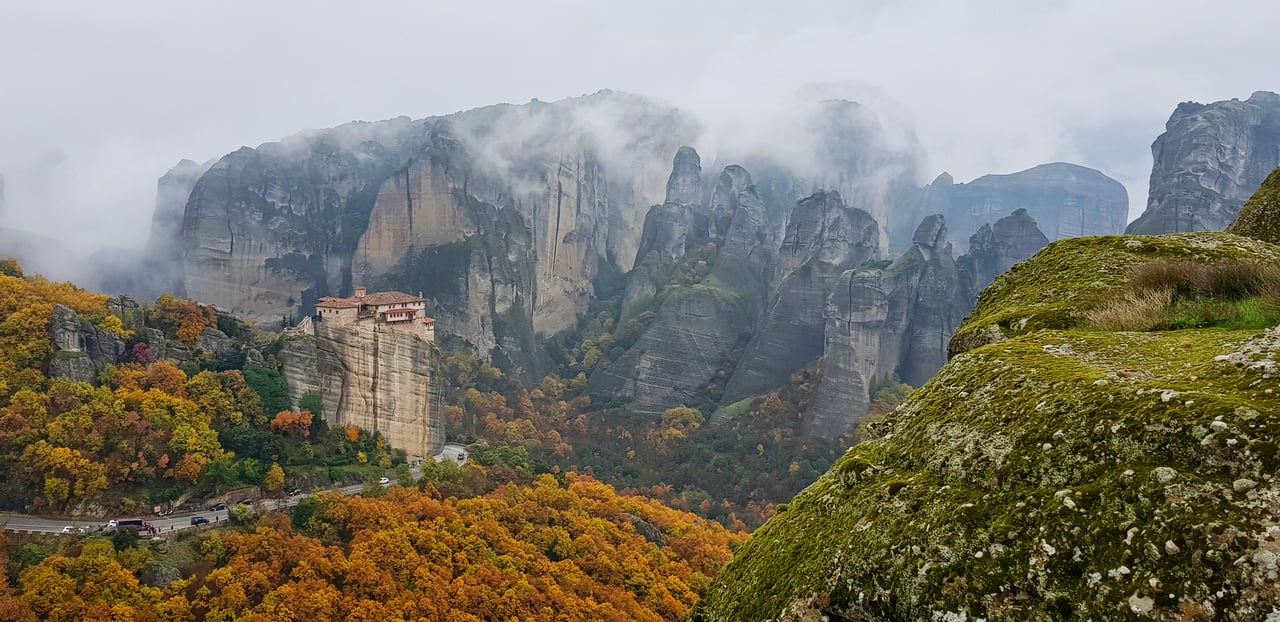
The wondrous natural landscape of Meteora is the second largest pilgrimage and monastic area in Greece. The area that has been named a UNESCO world heritage site features imposing rock formations that will awaken serenity and tranquility while taking your breath away by the fascinating views.
Meteora and Monasteries
At Meteora you may visit some of the oldest Monasteries in Greece. Each one of the monasteries is special. One thing that is common among them is their unique location and construction, which meant that, until the end of the 19th century, monks and nuns had to use rope ladders up and down the rocks to transport the simplest of goods.
Meteora hiking
Hike through the impressive Meteora rocks, see many secret places, ruins of old monasteries and have the chance to take amazing photos. Discover the paths of the first monks and see this unique geological phenomenon walking at its heart. Hiking in Meteora gives you the opportunity to see the monasteries and landscape from an entirely new perspective.
Food and Wine
Don’t miss to combine your trip to the town of Kalambaka with a visit to the nearby town of Trikala. A key area of the town for any foodish is the Manavika, a spot where traders once flogged their wares, it is now full of tavernas. Here you can try any of the local specialties such as country sausage, veal liver, pork shank, lamb chops and galotyri, a fresh soft cheese similar to a thick yoghurt.
Meteora is among the top instagrammable places in Greece so avoiding the crowds and get the perfect shot might be challenging. If you are not happy with your Meteora photos, wake up before everybody else and head for a Meteora sunrise photo session! You will most probably have the views all to yourself!
10. Traditional Greek foods in mainland Greece

The traditional Greek foods are actually the most characteristic example of a Mediterranean diet, sharing also many characteristics from Middle Eastern and European cuisines. The traditional Greek foods are composed of many products such as olive oil, vegetables, herbs, bread, fish, fruits and various meats, including lamb, poultry, beef, and pork. In the mountain regions of the mainland, people cook more meat, as they have easier access to cattle and sheep breeding. There are numerous recipes with meat in Greece, accompanied by pasta, potatoes or vegetables. Kleftiko is a very popular meat dish.
Greek custard pie with phyllo (Bougatsa)
Thessaloniki is well known for its pastries and one in particular it made famous is the semolina custard pastry, bougatsa. You can find these on every street corner. Another recognized dessert of Thessaloniki is the trigono Panoramatos. Trigono, which means “triangle”, is a dessert which consists of buttered sheets of fyllo are folded into triangles.
Greek cheeses
There are many unique Greek cheeses, like Graviera, Kefalotyri, Myzithra, Kaseri and Metsovone. However, the most known is Feta, which is the basic ingredient of the Greek salad, but also of many pies and other recipes.
Greek white bean soup (Fasolada)
Fasolada, is another popular dish. It is simply beans that get to boil with onions, carrots and celery. It is simple, good nourishing and warming food. It is Greek countryside served in a soup bowl!
If you visit Greece in Easter, don’t miss to try kokoretsi, a traditional Greek food consisting of lamb or goat offal that is chopped into tiny pieces, seasoned with lemon juice, olive oil, salt, and pepper.
11. Learn how people in ancient Greece used to conquer stress and anxiety, and improve your mental performance

Nature, other than endowing Greece with rare landscapes and special splendors, also gave the country resources with important therapeutic properties. The Greeks were among the first to discover the beneficial properties of thermal water. “Whoever comes here forgets”. They used it not only for cleanliness and therapy, but also for relaxation.
Pozar
Located in the district of Pella, the birthplace of Alexander the Great, Pozar Thermal Baths, in the foothills of Mt. Kaimaktsalan, is an impressive site for so many reasons. It boasts hot springs, pools, and rivers with thermal water as well as natural and artificial waterfalls.
Kammeva Vourla
150 kilometers north of Athens, is another great destination for a relaxing and rejuvenating holiday. Blessed with radioactive elements which some claim to be beneficial for healing a series of ailments, the hot spring’s water temperatures vary between 30-40 °C.
Located 2 hours from Athens, between Delphi and Meteora, travelers will find Loutra Ypatis, a small spa town, popular among Greeks. The source there was used since antiquity and actually has a uniqueness as it differs from all other Greek spas in the physicochemical composition of the water.
Edipsos
Located about two and a half hours from Athens on the island of Evia, Edipsos is one of the most famous spa towns in Greece. The town has approximately eighty thermal springs. Starting from Edipsos, you can also explore the neighboring areas of Evia, which is one of the largest islands in Greece.
12. Join Traditional festivities with the locals
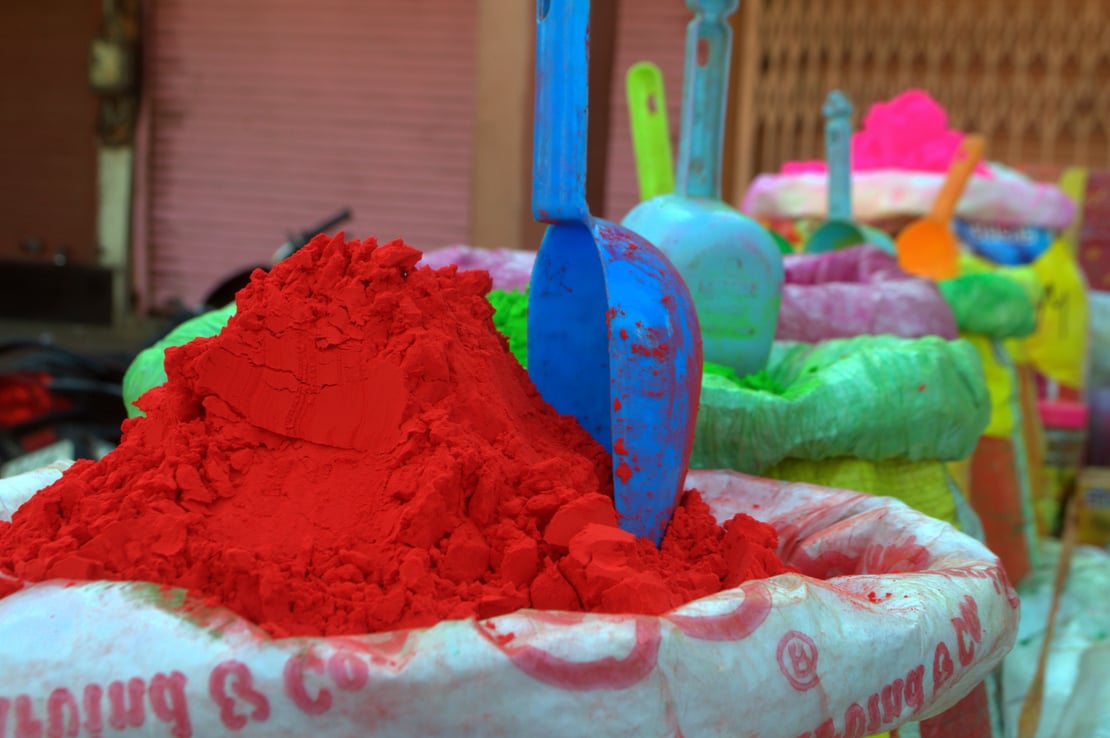
Customs and traditions in Greece are an important aspect of the Greek culture. There are either of a religious character or coming from paganism. Furthermore, most of the traditions and festivals still celebrated today are religious. Some of them are the following:
Name day celebration
Most Greeks are named after a religious saint. A very important tradition is that everyone who has a name coming from a saint celebrated by the church celebrates his name on a given day of the year.
If you visit Greece in October, don’t forget to include Thessaloniki in your list. The celebration of Agios Dimitrios is the most important religious festival in Thessaloniki and generally in Macedonia so if you plan to visit Greece in October, make sure that you will be there on December 26th.
August 15th
This feast celebrates Mary's ascent to Heaven. On this festive day, in the precinct of the temples or in the villages squares great celebrations are organized. This is an excellent opportunity to savour wine and a variety of local dishes served on large tables set for the occasion.
Carnival
Greece, the Carnival is called "Apokries". The festival consists of two weeks of the feast, beginning from the Sunday of Meat Fare and ends with the first day of the Lent, called Clean Monday (Kathari Deutera).
On Clean Monday you can join in a tradition called Alevromoutzouromata, which is actually a custom where people throw flour at each other. All you gonna need is coloured flour and a costume! The celebrations take place at the seaside road of the harbour and the Pera-Panta Park in Galaxidi.
How to get around in the Greek Mainland by airplane
Once in Greece, make the most of your time by getting around efficiently, minimizing waiting and transportation times. Some tips and info by our experts on how to best experience and get to know the capital of Greece, by moving around like a local.
-
How can I reach Peloponnese and mainland via airplane?
The Eleftherios Venizelos airport has connections (direct flights, or one stop flight) to most major airports on the Greek mainland and the Peloponnese region. In less than an hour you can be at Kalamata (KLX), Ioannina (IOA), Thessalonica (SKG), Kastoria (KSO) and Kozani (KZI).
How to get around in the Greek Mainland by train
-
Is there a train that connect Athens to Peloponnese and mainland?
Greece’s railway network is approximately 2,500 km long, covering the greater part of the mainland. The transportation of passengers, luggage and driver-accompanied vehicles is carried out through regularly scheduled routes that are amended every year.
-
Which is the best train route in Greece?
The Athens-Thessaloniki line is a wonderful choice for whoever wishes to travel either on the express which completes the journey in 4.5 hours or on the regular train.
When traveling by train, it is worth looking at the architecture of the old stations along the line, most of which had been built at the end of the 19th century and are of unique workmanship and symbols of early industrial architecture.
Currently, there is no connection via train to Peloponnese but there are plans for a new network to be running from Athens to Patras, Kalamata, and other cities in the Peloponnese.
The journey towards the Peloponnese is made by taking the Suburban Railway to Kiato (Pasio), the terminus, 30 kilometres to the west of Corinth and from there by boarding the appropriate National Railways bus to other cities.
How to get around in the Greek mainland by bus
-
Can I travel around Greece by bus?
The process of finding the correct bus to travel in Greece it’s a complicated process and we usually do not suggest to first time visitors. Athens is a major bus hub for every mainland and Peloponnese city of the country. KTEL Attikis serves the whole mainland and Peloponnese regions with daily routes that run all year, operating from two different stations, one near the center of Athens (Liosion Stations) and one near the Athenian main highway (Kifissou station).
There are 2 central bus terminals in Athens - one called Liosion Bus Terminal, for all KTEL companies located and operating north of Athens and a second one called Kifissou Bus Terminal for the KTEL bus companies operating south of Athens, mainly involving Peloponnese. All KTEL bus companies of Greece will either start from there or they’ll end their trips to those two bus terminals of Athens.
How to get around in the Greek Mainland by car
-
Is driving around the Peloponnese and mainland safe?
Driving is the best way to discover mainland and Peloponnese. There are highways for every part of the regions and the signs are all in English. Google maps also work like a charm.
-
What documents do I need to hire a car in Greece?
Most car rental companies require the driver to be 21 years of age with a valid driver’s license. An international driver’s license is also required.
-
Where can I rent a car at Peloponnese and mainland?
There are plenty of local and international companies offering these types of services in every city, at the airports and at the ports.
How to get around in the Greek mainland by taxi/ private transfer
-
Is a taxi reliable?
Most of the taxi drivers are reliable, but it’s always a good idea to ask for an estimated price before hopping in, especially if you want to ride outside of the city or at night.
-
Is booking a private transfer a good option?
Booking a private transfer is ideal for travelers who want to get to their destinations with ease and comfort. There are many quality transfer services in the Greek islands that will make your time in Greece as relaxing as possible but make sure you book them in advance.
-
Is UBER available in Greece?
Uber doesn't exist in Greece the way it is operating in the rest world. In Athens you can request a normal taxi ride using the Uber application.
Want a more relaxing experience? Booking a private driver is a great option which allows you to explore the Greek islands at your own pace without worrying about finding transportation or catching a taxi.
2. Where to stay in Mainland Greece
Stay in colorful coastal villages
Nafpaktos
Nafpaktos is a coastal town in western Greece and one of the most picturesque places in the Mainland. What makes Nafpaktos so unique is that it combines the sea with the mountain and that it’ s an all year-round destination. The place is full of history so don’ t miss to visit the castle and then stroll through the old town with the beautiful houses and the blooming flowers. End up at the harbor which is the perfect meeting point with great cafes and restaurants.
Nafplio
Nafplio was the first capital of Greece but, fortunately, retained its nineteenth century charm. It’ s about one of the most delightful towns in Greece as it was built under two castles- the fortress of Palamidi and the ancient acropolis of Acronafplia, which definitely you should explore. Here, you will stroll around the old town and you will enjoy your day walking among the bougainvilleas in the narrow streets or visiting some museums like the War museum or the Greek Folklore museum. Also, if the weather permits it, you can spend your day at the beach.
When you get hungry, visit one of the small taverns in the Old Town and try their homemade traditional dishes. There' s a big selection of hotels and boutiques in Nafplio, most of them in the Old Town.
What to do in Mainland Greece in 24 hours?
-
Visit a traditional village
Enjoy a colorful day at the coastal city of Nafplio, the first capital of Greece, to discover its rich architecture and admire the various monuments still standing and the famous ancient theater of Epidaurus.
Once at Nafplio, don’t miss the opportunity to walk upwards and see the castle of Palamidi. You’ll discover many fine views and be amazed by the impressive architecture. -
Enjoy traditional Greek lunch in a local taverna
As well as being one of Greece's most romantic towns, Nafplio is also a dream foodie destination. Wonder around the picturesque streets and choose one of the many traditional taverns in the center of the city.
The Saturday farmers’ market, right below the Palamidi is open until 14.30. Buy some of the famous local oranges for your journey up to the castle.
What to do in Mainland Greece in 2-3 days?
-
Visit Delphi and Meteora
Start from Athens head to Delphi archeological site. Spend the night at the nearby village of Arachova and continue your trip to Meteora. Marvel at amazing cliff-top monasteries in Meteora and stay for the night at the traditional city of kalabaka before heading back to Athens for departure.
-
Stay in a medieval castle and swim in crystal clear waters
Pick up your rental car from Athens and start your journey to Peloponnese. On your way to the medieval city of Monemvasia, make a stop to admire the famous Corinth Canal. Upon your arrival at Monemvasia, get lost in the narrow passages and alleyways, filled with history and a sense of romance and it will be like traveling to the past. Spend the last part of your trip, soaking in the sun and the sea at one of the best islands of Greece, Elafonisos.
What to do in Mainland Greece in 4-5 days?
-
Conquer the home of the gods while hiking through divine nature at Mt Olympus
Mt Olympus was believed to be the habitat of the 12 Gods. It is not only the tallest mountain in Greece, but also one of the steepest to climb. In fact, hiking Mt Olympus is mostly done during the summer, otherwise weather conditions can be extreme.
-
Trek through the heart of Peloponnese
Seventy-five kilometers long, the Menalon Trail is a mountain hiking path that runs through the heart of Peloponnese. With a diverse landscape of rugged mountains, canyons, and verdant valleys, the trail passes through picturesque villages all of which are worth exploring.
What to do in Mainland Greece in more than a week?
-
Go for a road trip to Peloponnese
Take a journey into the Greek lifestyle through time thanks to some of the best preserved medieval castles in Europe, which blend harmoniously with the incomparable beauty both the natural landscape and the traditional settlements. Nafplio, Mani and Pilos are only some of the destinations that you should put in your list.
-
Discover the beneficial properties of thermal water in Central Greece
A country of endless summer, Greece boasts a rich ecosystem, diversity and spectacular landscapes, including natural hot springs. Located 2 hours from Athens, between Delphi and Meteora, you will find Loutra Ypatis, a small spa town, popular among Greeks. The source there was used since antiquity and actually has a uniqueness as it differs from all other Greek spas in the physicochemical composition of the water.
-
Discover Northern Greece by car
Start your road trip at Thessaloniki, one of the most beautiful cities with an interesting cultural blend! Next stop, Ioannina, the lakefront city with the exquisitely well preserved buildings, oozing Ottoman heritage, splendor and folklore architecture. Continue your trip to Zagori. Once setting foot in the region, one realizes that Zagori is big on stone. There is a certain something about the elegance of Zagorian architecture that it's almost enchanting. Charming old villages will surround you with their earthy colors while the fresh mountain air will go straight to your lungs and give them a kick of life.
What is Mainland Greece like in the Spring?
-
The reason why Spring is ideal for active travelers
March can be a bit cold, but from April and onwards the temperature gets warmer and in May people start swimming in the sea. Spring is a good season for river sports. As the snow melts in the Greek mountains, rivers get filled with running water. This is when many mountaineering clubs in Greece organize rafting, kayaking, river trekking and other activities. Best mainland regions for these sports are Zagoria in Epirus, Arcadia in Peloponnese and Evritania in Central Greece.
What is Mainland Greece like in the Summer?
-
Ideal for off the beaten path travelers
Greece is a beloved destination and it attracts millions of tourists especially in the summer months! If you want to avoid the big crowds of the islands, Mainland Greece is the perfect place for you. The beaches of the Peloponnese aren’t as famous as those of the islands, giving them a quieter, more local feel. Simos Beach, with its white sand and blue sea, is a particularly beautiful spot.
What is Mainland Greece like in the Autumn?
-
The first days of Autumn in Mainland Greece
Autumn is a very special time in Greece. The countryside becomes especially luminous, the sea stays warm enough for swimming, the resorts become a bit quieter and the earth delivers its bounty of olives and grapes. It’s a time to enjoy the many shades of red and orange as the trees change colour and nature comes into its own. This is when so many of Greece’s most romantic venues come into their own: the fortress state of Monemvasia, and Nafplion and Nafpaktos with their Venetian castles and ports. It’s the time to take a hike on the old trails on the islands and mainland and pay homage to the wonderful Byzantine churches and monasteries found all over Greece.
What is Destination like in the Winter?
-
Why visit Mainland Greece in Winter
Spending the summer in Greece is an excellent idea, but don’t be too quick to dismiss it for your winter holiday break. You may be surprised to find out that temperatures can reach as high as 18 degrees Celsius in November and December in the southern parts. It is also the quietest time of the year, and that's not a bad thing. It means you can have grand ruins like Delphi to yourself..
Hope to see you soon
We hope our ‘What to do in Mainland Greece’ travel guide stays by your side during your holidays in Greece and we wish you the best time ever.
Our team of experts work hard to ensure that your holidays take place without any fuss.
Safe travels, The team of Travel 12
copyright © 2020 travel12 | traveling experiences all rights reserved
- terms and conditions
- privacy policy
-
ministry of tourism licence number: 0206E60000594201


